

























For some years now, we have been trying to find a new way to hightlight the cultural and historical treasures and to revive springtime in Brixen.
The success of the light and music show Soliman’s Dream has given us the courage and the power to take up a huge project like the Water Light Festival and to realize it.
I would like to thank all those people who have believed in this project from the very beginning and who have financially supported it. In particular, I would like to point out the City Council Brixen, the Department for Culture and the Department for Tourism of the Province of Bozen, the Stadtwerke Brixen and all from the economic sector of Brixen who have largely contributed to our project.
We hope that this project of three years may be successful already in its first year in order to allow us to reach our medium and long-term aim to increase overnight stays and frequencies in springtime.
Finally, a great compliment to our project direction, the team of Spectaculaires and all the participating artists.
Water and light are two symbols of life that have coined the city image of Brixen. The numerous fountains of our old city centre are precious cultural and historical treasures, whose beauty is often hidden in our daily passing-by. Now for three weeks, they will be in the highlight and will literally be placed in the spotlight. In the name of the council administration, I congratulate the Brixen Tourism Association for the idea to revive spring in Brixen with a festival of water and light. I am especially pleased about the collaboration with the Stadtwerke Brixen for the realization of the project, about the partnership with local artists as well as the strong support by private sponsors. We as a community, as they do, strongly believe in the success of this initiative and are convinced of the value that this festival brings for all of Brixen. I am looking forward that the art and light installations as well as the cultural side programme will be enjoyed by local people as well as guests and that the Water Light Festival may further strengthen the amenity of Brixen as a city of art and culture.

The old city centre of Brixen is the mirror of its eleven centuries of history. Its sights and art treasures witness its importance as a cultural centre. Located at the confluence of Eisack and Rienz, the water has always been a coining element of the city. Due to the “Water Light Festival”, this element is the highlight for 17 days and the old city centre is uniquely set into scene with different projections. Brixen is setting new priorities, which go beyond the city.

The night of the premiere of Soliman’s Dream was also the moment when the Water Light Festival was born. Benoît Quéro, artist director of Spectaculaires and I probably had had a glass of whisky too much. From the whisky idea, slowly a network of ideas and ingredients developed; the idea of a blue line turned into a first concept.
A few months later, Benoît came to Brixen for an inspection. The world of fountains became the core of the festival, also the location of the Tschumpus was examined.
For the first brainstorming in May 2016, I took Manuela Kerer with me, I absolutely wanted her as a contemporary musician from Brixen to be part of the project, as well as our graphic and creative, Arno Dejaco.
The water concert came into being.
Together with Franck and Clement of Spectaculaires, we created the first project of the then called light and music show of “Le voyage de l’eau”. We were all aware that we had to distance ourselves from Soliman’s Dream and its marvelous location, the Bishop’s Palace. Fortunately, Spectaculaires were able to get the international musician izOReL for our project.
The title WoW – World of Water came later, but the basic idea for the show, top-class music and strong pictures, all about the topic water, very emotional and speaking to people and their feelings… Franck and Clement had their playground.
During a lunch with the Brixen artist Hartwig Thaler, the Water Light Festival was extended by some local art projects, and important moment to involve all the city of Brixen in this event.
The now developed concept, to set the old city centre into scene with the
elements of water and light and to revive the month of May, was then presented to the different commissions.
The feedback was, probably due to the success of Soliman’s Dream, very positive; even more, many people offered to take part in the project and came up with even more ideas. The collaboration with the gardeners and the decoration of the urban flora with Mediterranean flowers and plants, the historic research about water and the description of the fountains by the Geschichtsverein, a drawing and painting competition about the topic water and light for pupils of Brixen and the collaboration with the Stadtwerke Brixen.
The last ideas came from the Light Festival Murten and Benoît himself. Light games to participate, Claudia Reh and her concept “Echtzeitlicht” and the Human Energy project by Ludik Energie. Human energy transformed into power as a critical reflection on the consumption of electricity.
The Water Light Festival does not want to be a completed idea, it is a creative project that was pragmatically conceived by omitting some aspects and with a great potential of development for the future.

Thanks to all creative collaborators: Benoît, Franck, Yves, Olivier, Clement, Thomas, Manon, izOreL, Matthieu, Manuela, Arno, Lilli, Egon, Hartwig, Claudia, Johanna, Manfred, Doris, Astrid, Markus, Florian, Kurt, Peter, Tobias, Raimund, Franz, Jakob, Andreas.
Werner Zanotti, in the name of all creatives of the Water Light Festival.








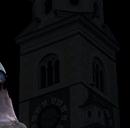

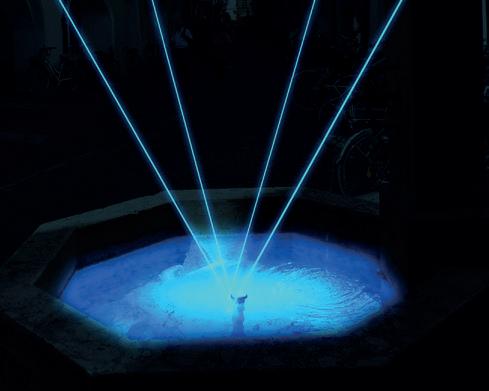

5th – 21st May 2017


Water is life. Light is life. The first edition of the Water Light Festival in Brixen invites you to experience both elements anew. The festival takes you into a dream world of light and water, amidst numerous historic art treasures of the old city centre of Brixen. A special item of the city receives through fascinating light installations a completely new meaning. Bright and shining colours and shapes plunge the extraordinary water sites of Brixen into a magic atmosphere. The old city centre blazes in a sea of lights that invites you to dream and marvel.
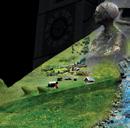



The light projections of the French light artists Spectaculaires – Allumeurs d’Images transform the fountains of the old city centre into experience islands. They tell stories about water as a life elixir and as a symbol. The three local artists Johanna Meßner, Hartwig Thaler and Manfred Mureda have also dealt with the topics water and light and have each turned one fountain into a piece of art. More art is to be discovered at the exhibition “Water & Light” with works of five South Tyrolean artists. An inspiring discovery journey through a shining Brixen!


The HighLIGHT of the Festival
“WoW – World of Water” is a unique light and music show about the variegated world of water, especially created for the Water Light Festival: A hidden backyard of the former jail transforms into a glittering underwater world, a paradisiac dream island or colourful paintings by Claude Monet and Vincent Van Gogh, painted of light and animated video projections. A sailing tour through unique underwater worlds of breathtaking colours and poetic pictures, accompanied by the wonderful music of the French composer izOReL. Dive into it, let yourself be carried away by the waves and be enchanted by the spectacular light plays!
Foto: Spectaculaires“Fluid Keys”, the water concert of the Brixen composer Manuela Kerer turns out to be an exciting experiment: What happens when composition and nature unite? When the weather irrevocably changes the tuning of the five pianos that are located on the peninsula at the confluence of Eisack and Rienz? Every concert promises to be a new music experience, which you can listen to in the open concert hall at the river.
Produce power by riding a bike on Cathedral Square for a light installation by Ludik Énergie, which brings to life the Cathedral Square. Or you participate at “Mirror Depths – a projection about the secrets of life” by Claudia Reh on the facades of the Maria Hueber Square . Take part, become a part of the festival and give the Water Light Festival your personal touch!
The Blue Line connects the single festival highlights of the old city centre of Brixen and leads the visitors through the wonder world of light and water. Follow it and discover Brixen with its artistic and historic singularities in a new light.

“The origin of all things is water, everything is made of water, and everything turns back into water”
Thales of Milet

We humans are water creatures: our body is, according to our age, made of up to 70% of water. We need it to live and to manage our everyday life. It is no wonder therefore that people have always settled at rivers and streams. Stufels, the oldest part of Brixen on the languet between the rivers Eisack and Rienz, were already inhabited in the pre-Roman Iron Age. In the year 901, due to the gift of the estate Prihsna by the Carolingian King Ludwig the Child to the Bishop of Sabiona Zacharias, the city of Brixen was established at the confluence of the two rivers. However, not only on the surface Brixen is close to water: numerous subterranean water courses cross the city in its underground – an invisible water net.

The water is and was essential as drinkable water and food source. From more than 20 fountains in the old city centre springs fresh water –Brixen has therefore got the highest density of drinking water fountains in an old city centre in the alpine area. Especially during the Middle Ages, the supply of fresh water was possible due to these public ground water fountains: According to the city book of 1604, in those times Brixen already had more than 10 drawing wells spread all over the city, two pipe wells and two running wells, which constantly had running water. The mayor’s decree of the early 15th century points out the importance of fountains as a duty of the mayor “alle prunn si sein in der stat oder ausserhalb [zu] versorgen.” (all the fountains within or outside the city are to be supplied).
The water also provided protection, as towards the east the Eisack was a natural defensive wall, which made the entrance to the city more difficult. In order to protect the Bishop’s palace in the cathedral area, the palace was surrounded by a moat, which is still filled with water on the south and east side also nowadays – and where swans take their majestic turns. The Bishop’s palace is the only castle in South Tyrol which is still surrounded by a moat today.
The power of water was used in the past and it is still used nowadays for the production of electricity. The Stadtwerke Brixen produce a part of the needed power for the city thanks to hydropower. Nevertheless, water also hides some dangers, as the city Brixen knows very well. Again and again the old city centre was devastated by sometimes catastrophic floods. In the years 1882 – 1898 eventually, the Eisack was given a regular course – and we are still working this way today. With the project “StadtLandFluss”, technical measures to prevent flooding have been set up, but not only: the innovative project creates new riverbank areas along the river and brings hereby the element water closer to its citizens. Moreover, it is a way of sensibilising them for the ecologically precious habitat of the river and the meaning of water for our lives.

The water of Brixen is known for its outstanding quality and its good taste: it is a very special quality water that runs from the taps of Brixen. On the home mountain Mount Plose, there is even an extraordinary source: the mineral water of the artesian Plose- spring is considered one of the lightest and purest high alpine water sources of Europe.
Since long ago, water has been attributed purifying and healing powers; many sources around Brixen have been frequented by people for curing their diseases and represent mystic places. On the healing power of water was also based the naturopathy of the priest Sebastian Kneipp and in Brixen was established the first Kneipp Clinic of the Austrian Monarchy in 1890, the Clinic Dr. von Guggenberg.
With the Water Light Festival, the city of Brixen highlights now its high water and light competence. With the development of new light technologies and its experience, which Brixen and its Stadtwerke own, the festival takes you into a dream world of water and light. Where everything has its origin and where it goes back to.
Foto: Helmut Moling
A fascinating light and music show, created by the French light artists Spectaculaires – Allumeurs d’Images, especially for the Water Light Festival in Brixen.
Let yourself be enchanted by breathtaking colours, poetic pictures and wonderful music! The light and music show “WoW – World of Water” takes you into the variegated world of water. Water is the origin of all things, it makes you dream and marvel. It has no shape, it is constantly in movement – one time as smooth as a lake, then thunderous like a mountain stream or shirring like a sea wave. It forces its own way, it leads to new shores and paradisiac islands of fortune, which are to be discovered. From the floating snow flake to filigran ice crystals, from the fluffy sky of clouds to bubbling geysers, from the glittering underwater world to the mystic god of the sea: poetry is in the air, shining light pictures and touching music, which get the hidden backyard of the old city centre of Brixen into a swing. Sail with us on this light journey through the manifold water worlds!
The light show will be accompanied by works that have been composed for this show by the French composer izOReL.
Water words
Music: water words
Experience water in its variety.
Water, the origin of life
Music: water, the origin of life
At the beginning, there was water. About the origin of the world and of life.
Message in a bottle in the sea
Music: Sjor
From the glittering underwater world to the dream paradisiac islands.
From shore to shore
Music: from shore to shore
The sea has always been a nostalgic place that has inspired dreams.
Watercolours
Music: Campagna
Water is light in movement: the colours of water.
Mythological: like a fish in the water…
Music: Happy Child
Poseidon and Amphitrite and the pleasant sides of water.
The dance of the water
Music: dance of the water
From the source to the sea: water gets its own way, in complete freedom.
Duration: 20 minutes
 Foto: Spectaculaires
Foto: Spectaculaires
“The true joy is to make everybody happy.”
Benoît Quéro, InhaberSpectaculaires – Allumeurs d’Images create animated video projections with state-of-the-art mapping – techniques at highest levels. The French light artists around Benoît Quéro – the “Master of Light” (Le Télégramme)- enthusiasm with their original, poetic and spectacular light shows in which they tell very special stories. Unique architecture and unique settings are taken by the light masters into their performances and make young and old wonder. www.spectaculaires.fr
With the multimedia light and music show “Soliman’s Dream” in the last two years, Spectaculaires have told the story of the elephant Soliman, which travelled through Brixen in the 16th century. The fantastic journey through the dream world of the elephant in the courtyard of the Bishops’ Palace in Brixen has enthused more than 100,000 visitors so far. “Soliman’s Dream 3” can be seen at the Bishops’ Palace in Brixen from 23rd November 2017 to 7th January 2018. www.brixen.org/soliman
 Foto: Helmut Moling und Philipp Santifaller
Foto: Helmut Moling und Philipp Santifaller
izOReL, this name stands for a solo project by the musician Aurélien Roureau, born in 1979 in France. izOReL studied electro-acoustic composition at the conservatorium in Bordeaux as well as language sciences at the University of Bordeaux. He composes amongst others music especially for dance shows or live-performances. izOReL has released several CDs, founded the electro-country-rock band KarteryKash and forms with other artists the interdisciplinary artist collective Matekemata. The composer lives in France and Spain. www.izorel.com

Until 2009, the house on Cathedral Square number 3, in the shadow of the Cathedral towers, was the County Jail of Brixen – also called “Tschumpus” in dialect. The jail was just set up at the beginning of the 20th century and substituted the old city prison under the arcades of Brixen. The small jail is unique: not only did it record the highest rate of jailbreak, but the lively public life was confronted with a life behind bars. In the jail of Brixen, mainly small criminals or inmates in investigative custody were held, from 1975 on it was a male jail only. Today, the iron entry gate reminds us of the former jail.


Water concert. Work for five pianos in free nature
Composition: Manuela Kerer
Especially conceived for performances on the peninsula at Widmann Bridge Brixen, at the confluence of Eisack and Rienz.
What happens to five pianos that are exposed to nature for a certain time? The composer of Brixen Manuela Kerer has been able to create in her new work “Fluid Keys” a unique link between composition and nature, in which nature itself is an interpreter alongside five pianists. Like Eisack and Rienz join each others, in the same way composition and nature come together, fertilize each other, distinguish themselves, and become one in the end: nature as an erratic, but therefore even more intriguing partner- the composition as flowing art in time. The pianos, which are placed at the natural park between Eisack and Rienz, become works of art themselves as well as artists, whose operating is unpredictable. A piano tuner has tuned the instruments at the beginning of the project. Now they are exposed to the weather, which is part of the concept. To what extent do the natural circumstances damage the pianos or preserve them? We will hear if detuning has occurred.
The New Music has been working for decades wit micro tonal tuning systems, usually planned meticulously, in the case of “Fluid Keys” however not foreseeable to the very end. Therefore each concert is a new, different experience, more or less, according to the weather. Next to the avant-gardist sound language of Manuela Kerer, the visitors will also hear known “water music”, as the Brixen composer has arranged in her work pieces of Händel’s “Water music”, Smetana’s “Moldau” or Debussy’s “La Mer” for this unique and rare ensemble of five pianos.
The pianos, which are used, are instruments that were due to be disposed of for space reasons. Instead of going on a land fill, they become an immanently important element of this art project. The French light artists Spectaculaires give the music project with their poetic light plays a very special note and transform the place into a magic light world.
Pianists: Stephanie Dorfmann, Valentine Gasser, Renzo Huber, Eva Maria Vinatzer, Tamara Salcher.
The five pianists are high-ranking South Tyrolean musicians who along with their piano skills bring in also a good deal of curiosity.
 Foto: Nafez Rerhuf
Foto: Nafez Rerhuf
Born in 1980 in Brixen, composer, psychologist and jurist, loves marveling and is constantly looking for new sounds, surprises and challenges. She has composed amongst others for the Solistenensemble Kaleidoskop Berlin, the Klangforum Wien, the reihe, the Bayerische Kammerphilharmonie or for extraordinary artists like Julius Berger and Maja Ratkje. Her works have been performed at festivals like the Munich Biennale for contemporary music theatre and Vienna Modern or at concert houses in Berlin and Vienna, at Kampnagel Hamburg, at the Accademia Filarmonica Romana and at ACF New York. Manuela Kerer has been awarded many prizes, among them the Prize Walther von der Vogelweide (2009), the SKE Publicity Prize (2011) and the Austrian State Scholarship for composition (2008, 2011 and 2016). In 2009, the composer has been selected by the Committee of European regions as one of Europe’s 100 “young creative talents”, in 2012/2013 she was chosen by the Austrian Department of Foreign Affairs for the programme “New Austrian Sound of Music”. In 2015, she received the international work scholarship „Composer in Residence – women composers to Frankfurt”, in 2016 she was Composer in Residence at the Festival St. Gallen/Steiermark.
The composer of Brixen Manuela Kerer on her childhood memories about water in Brixen, about what stimulated her of the composition of “Fluid Keys” and about the role of water in it.
Miss Kerer, you have grown up in Brixen: Which memories do you associate with water in the city?
My strongest memory is of the Eisack. My school way passed along the river, but I spent a lot of my free time on the riverbanks of the Eisack. When there was heavy rainfall or high waters, it was quite frightening! On the other hand, water has always calmed me down, especially the rushing of a river. The different fountains of Brixen are also part of my memories: We always liked playing with water. A coining image were the people who filled their water bottles at the fountains in the city centre. There I found out that not everywhere good potable water runs from the tap.
In your work “Fluid Keys” composition and nature become one, nature somehow becomes the co-composer. What has attracted you of this willful collaboration?
I love planning everything into the very last detail. In this case, I leave something to nature and have to give away the lead. Therefore, a lot remains open and cannot be planned. Exactly this risk has attracted me, and if my plan works out, then “Fluid Keys” is, for me, one of the best projects that I have started. Just take the tune of the pianos, it depends on the temperature as well as the weather. How this so-called micro-tonality develops, it is nature that decides on it. Moreover, I wanted to involve nature so much because it is responsible for so many musical phenomena: for example, the sounds of an alpenhorn, of a real jodel or juchiza can only develop in free nature.
From the crunching of snow to the swashing of sea waves: water in all its aggregation states and forms opens up a varied world of sounds. Which sounds have contributed to your composition?
I have focused on rivers and flowing waters. Of course there are different consistencies like frozen ice, which I have used as an inspiration as well. Sooner or later rivers flow into the sea, which plays its sound role as well. Formally, the work follows courses of water and those paths that flowing waters take. Moreover, water plays a direct role in the work as the rivers can be heard very well from Widmann Bridge and therefore form a sound curtain. The pianos will be reinforced, but the sound of the water cannot and should not be faded out.
The sounds were an inspiration for me and have mostly been alienated or I have set them into abstract music. The work is not a programmed music in a literal sense and also not a compression of sound where you try to exactly describe music. My work is a shadow or a fingerprint. It is composed of pieces, where I have arranged historic water music for five pianos and I compare it with my music. I find it very interesting for the public to hear how Händel, Debussy, Smetana or Vivaldi turned water into music and how it sounds from the pen of a contemporary composer.
That could be the reason, but not only: we have bought the pianos from an inheritance or from people who would otherwise have brought them on a landfill. A piano is a piece of furniture and nowadays unfortunately few people have or want to have the space for it. For this reason, many beautiful, old instruments, which probably do not sound perfect, are made into firewood. We use these instruments and give them, in this way, a unique meaning.

















































With more than 20 fountains in the old city centre, Brixen has got the highest density of drinking water fountains in the old city centre in the alpine region. From most of them runs fresh water of highest quality, a welcome refreshment on hot summer days! Next to historic fountains, in the old city centre one can find also fountain sculptures of contemporary artists, like in the inner courtyard of the Bishop’s Palace by the South Tyrolean sculptor Franz Kehrer.
The French light artists Spectaculaires – Allumeurs d’Images set the fountains of the old city centre as well as the moat around the Bishop’s Palace into scene with light projections and create on different locations an extraordinary atmosphere. The three local artists Johanna Meßner, Hartwig Thaler and Manfred Mureda turn each one fountain into an art object.


It sparking of liveliness – like a geyser that throws its water fountain into the sky - Many single water light beams form one common way and lead as a Blue Line through Brixen. Follow it!












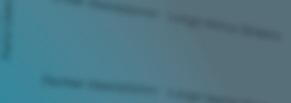












A game with transparencies and the light permeability of water. A diamond is born amidst a sea of fog and clouds, as precious and pure as water.

Do you know the story of the ugly little duckling that turned into a proud swan? Two thousand little ducklings flicker in the darkness of the night and await their shining transformation. One duckling, two ducklings, three ducklings…

A homage to nature: the very last penguin is sitting on an iceberg. It stares into the void that is expanding as soon as the last iceberg will have melted. Time freezes.

Without water no blossoming life: It makes nature grow and thrive.
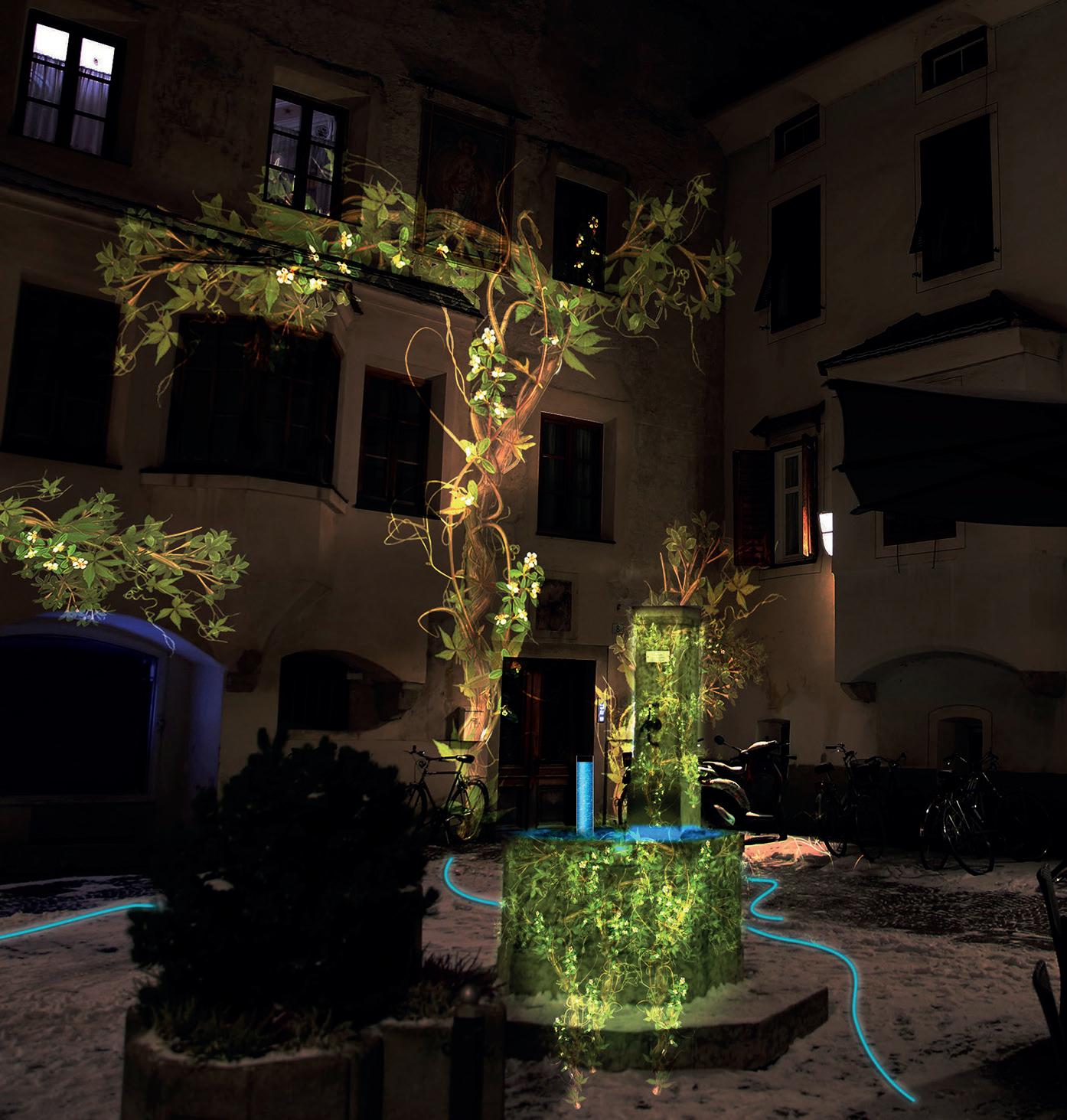
A drop of water transforms itself and returns in another form onto earth. The endless circle of nature where nothing is lost but everything is created anew.

If you throw an item into water, on the surface circular waves spread. A spiral develops. In the fountain with no bottom, concentric circles are drawn into infinity.
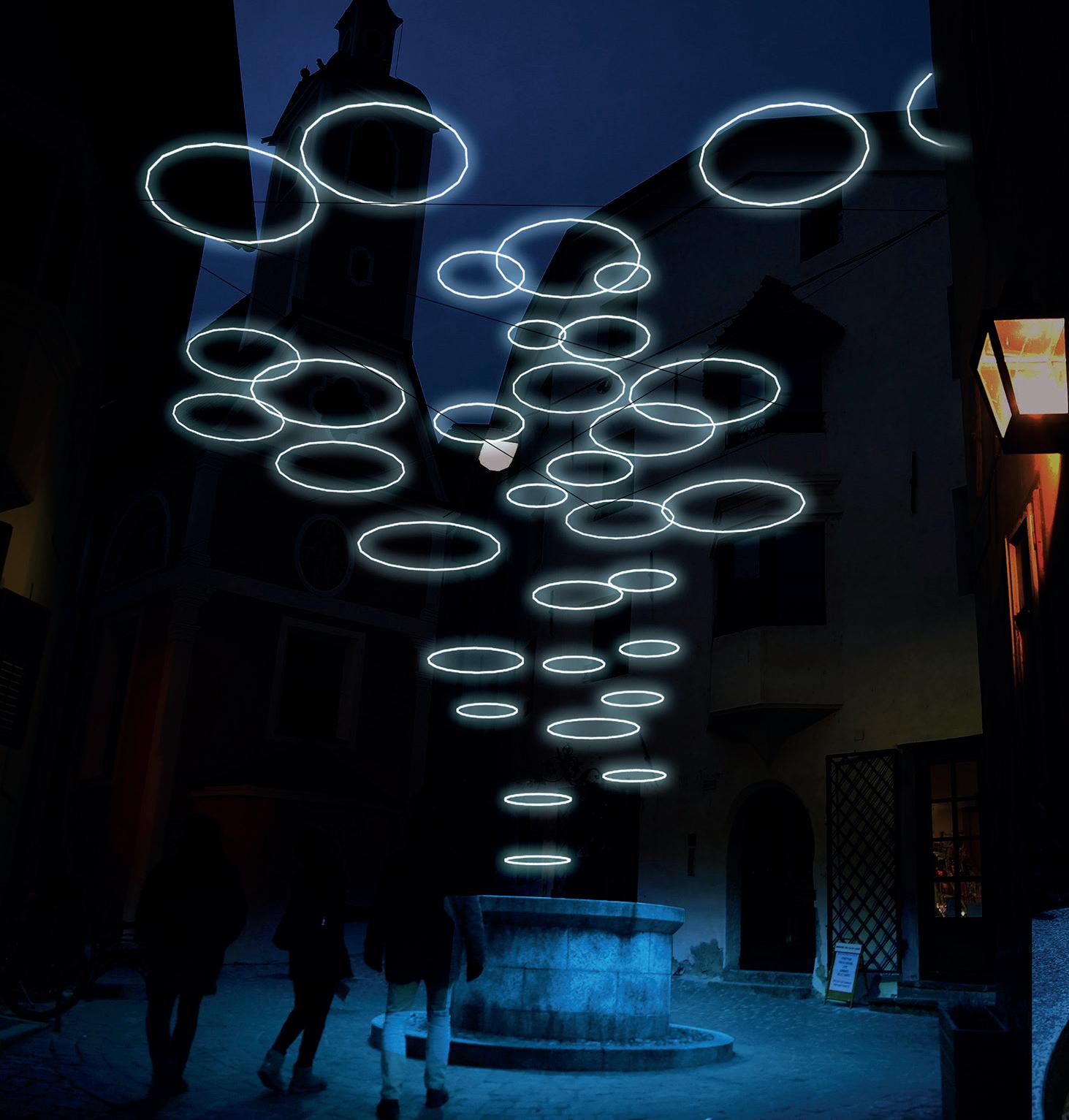
Shining, decorative, majestic: a fountain in Baroque light dress as a homage to the Italian Opera. Enjoy it!

Joyful splashing, light-hearted being: the free course of water gives even the darkest corner a particular freshness, joy and insouciance. Childhood memories come back.

What might this extraordinary person perceive from its pedestal? Listen carefully and you will be surprised!

If you follow the Blue Line in the right direction, it will always take you to the source…


Turn the crank and let yourself be surprised! Just take one step back, listen and observe: the everyday life disappears into a far distance, simply enjoy the magic of the light!
The tropical rainforest, a paradise of flowers, shapes and scents. It bubbles and lushes and blossoms, in all its variety.

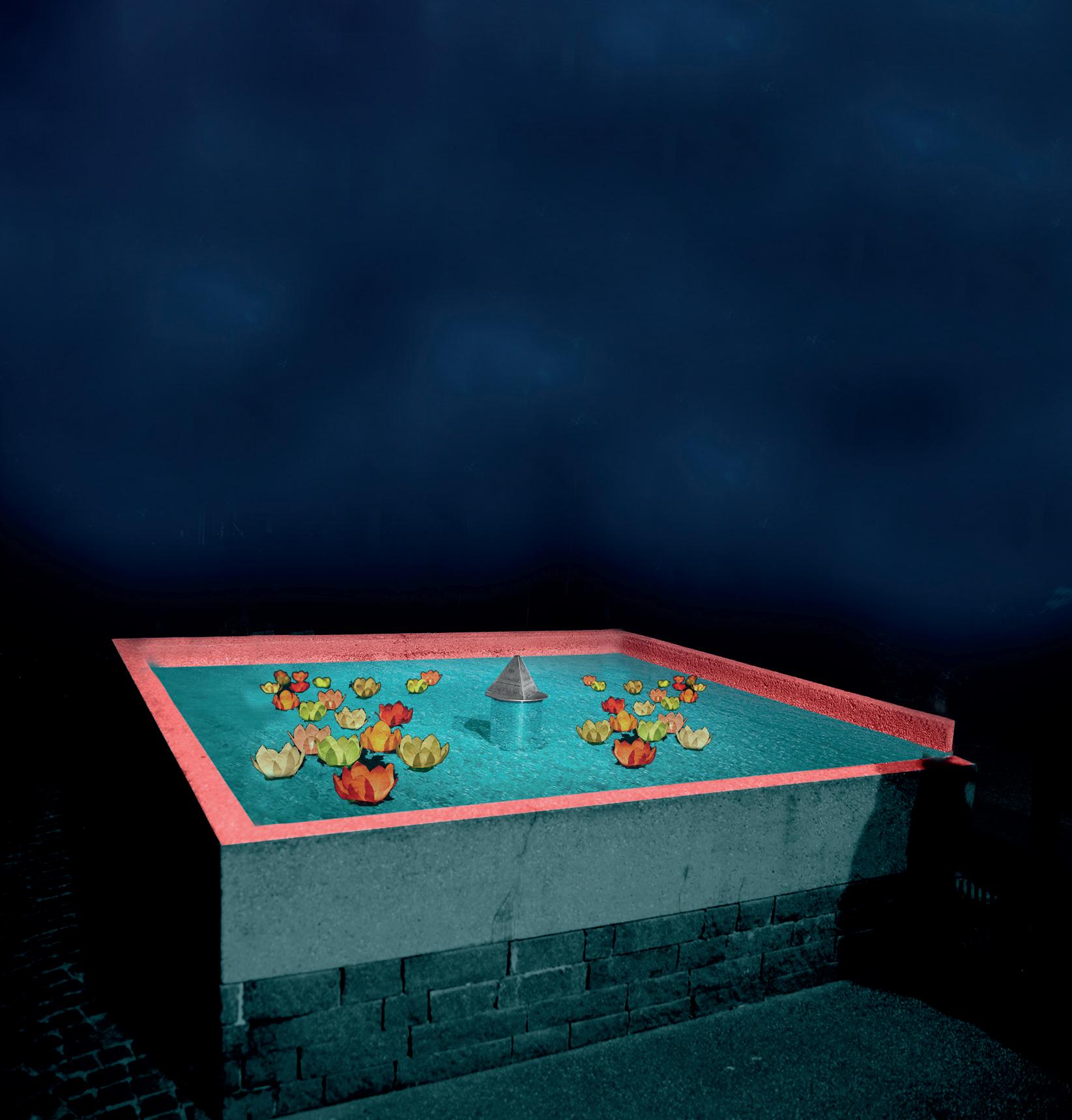
The flower of the lotus: a noble water plant, a wonderful water lily, the symbol of purity. Of its petals, every drop and every particle simply pearls off…


And sometimes the power lies in simplicity.Foto: Spectaculaires
A hidden backyard in the heart of Brixen. The beam of light gives a feeling of.

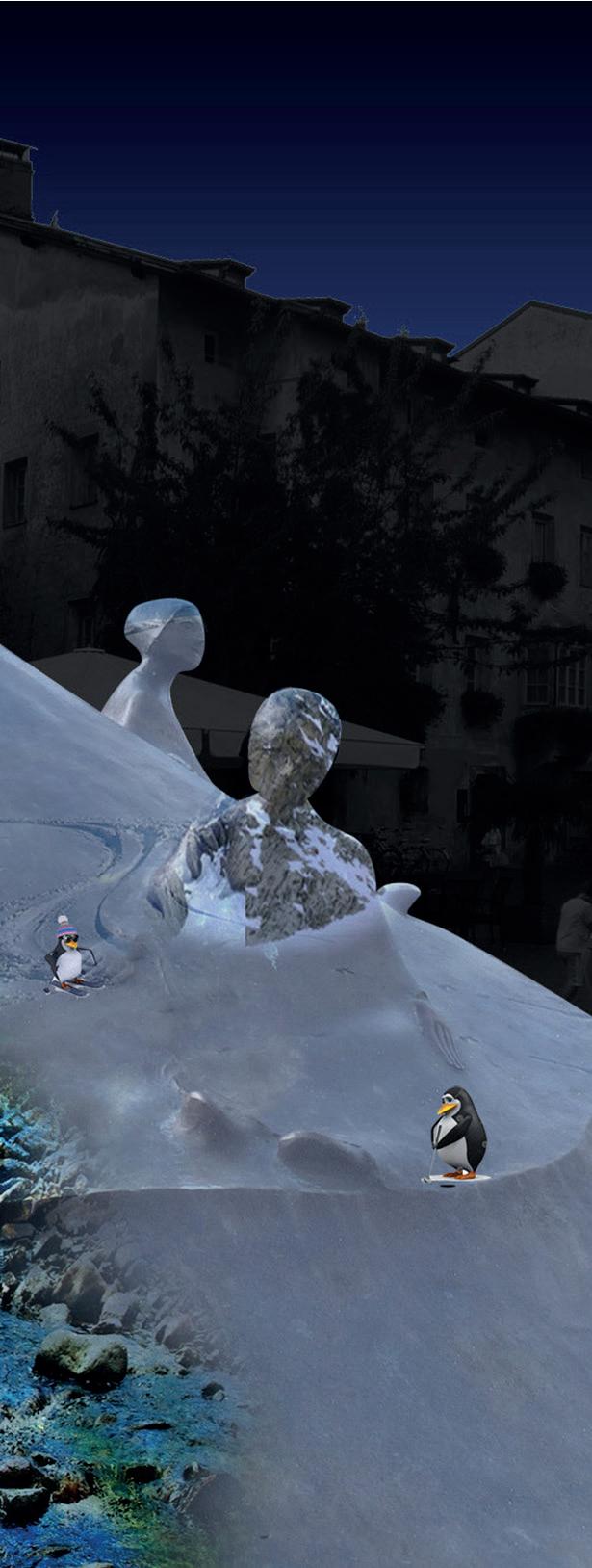

Mount Plose, the source of the water. The two seasons, winter and summer, in the ray of light.



ANEMON - the water light flower
Fountain – Großer Graben / Bastioni Maggiori 2017, diameter 150 cm, height 60 cm brass and painted wood
Water is the source of life, the big “soft”, the all-surrounding nectar of which life comes and nourishes. Water is the motherly shelter everybody is surrounded by. The alimentary product water is the food, which allows us as well as our surrounding nature to live. From the water, life has risen towards light.
Light has changed everything. With the help of light, life formed of simple cells its variety and beauty, its evolutionary explosion. Light gave the possibility of development, of growth. The encounter of water and light has allowed the wonder of life.
ANEMON is the water light flower. Born from waters, it seems to be floating without gravity, calm and majestically towards the sunlight.
Hartwig Thaler

“I want to create new, artistic worlds. I want to be at home and give a home In the radiating splendour and power of the living.”
The artist of Brixen got his formation in the Netherlands and draws, paints, models and designs. With musical colour sequences, graphic precision, with room management and material security, he has created his unique artistic cosmos in a new and unmistakable picture language.
Contact: www.harwtigthaler.de - info@hartwigthaler.de mobile phone: +39 3470606079
 Foto: Manfred Mureda
Foto: Manfred Mureda
Fountain – Altenmarktgasse / Via Mercato Vecchio
2011, height 90 cm, bronze statue & Head
2013, height 50 cm, terracotta
The goddess Venus arises from water. She gets out of the water. At the same time, the water of the fountain flows softly over all the figure. On top of the fountain, a terracotta head watches out like an attentive guardian on the scene.
Manfred Mureda
Manfred Mureda born in 1949 in Brixen. Later he attended the art college “Cademia” in St. Ulrich/Ortisei in Val Gardena. Art studies in Florence, art teacher and free artist in Brixen where in the 1970s he was devoted to artistic agitation, films, videos and installations. From 1980 – 1989 he was the curator of the artist circle St. Erhard in Brixen, where most of his exhibitions have been held. Since his withdrawal from public life, he has turned again to modelling, especially with terracotta.

Contact:
Untere Schutzengelgasse 9, 39042 Brixen - mobile phone: +39 3280247678
 Foto: Johanna Meßner
Foto: Johanna Meßner
magma carbonara
Fountain – Traubenwirt 2017, glazed ceramics, neon tubes
There are spaghetti and a fountain. There will be ceramics and light. And the possibility to drink water.
Johanna Meßner
Born in 1985 in Brixen, she lives and works in Vienna. She studied art and communication as well as textile creation at the Academy of Arts in Vienna, at the moment she is studying creative arts there.
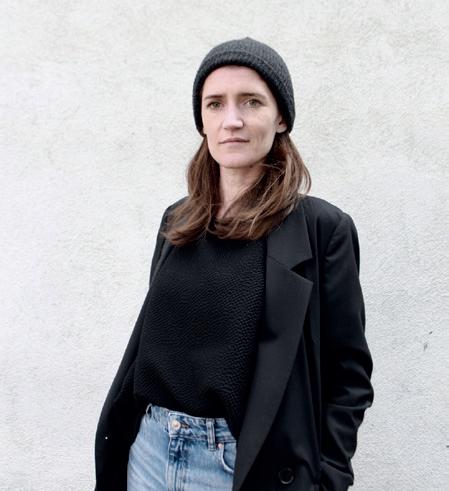
The provoking of different forms of perception and triggering of action impulses are central aspects of the artistic creations of Johanna Meßner. The varied ways of working and the choice of materials are in a processing exchange with the base concept of the work. The varied artistic forms of expression vary from ceramics, concrete moulds, light signs to videos and knitted creations. The textile material is a coining constant and a strong presence in her artistic creations. In her works Johanna Meßner often relates to autobiographic events, socio-political issues as well as quotes of everyday life.
Contact: messner.johanna@gmail.com

Take part in the Water Light Festival! Different locations in the old city centre of Brixen invite visitors to participate: you can bike on Cathedral Square to produce energy for a light installation or change live the water pictures of Claudia Reh. Become part of the Water Light Festival and give it your personal touch!
Riding a bike and producing power at the same time? Yes, it’s possible! On Cathedral Square some bikes are available for visitors to produce the needed power to lighten the Cathedral Square.
Those who pedal produce electricity with their power. This electricity will be stored and transformed in a generator into power (maximum 50 watt per generator). An energy meter shows the produced as well as the consumed electricity. With the energy produced by the visitors, the Cathedral Square is soaked into multi-coloured light atmospheres.
Ludik Énergie is a French event agency, specialized in sustainable development. In workshops and events, Ludik Énergie try to raise awareness about energy use and sustainable mobility. All their activities combine new technologies with fun and interactive entertainment. One of their most famous concepts is called “100% human energy”: Participants use their body to generate electricity with bikes, hand cranks and kinetic floors. With the hereby created electricity they can power their favourite activities like for example a cinema, a DJ sound system or a light show. With their activities, Ludik Énergie raise awareness that people have got the energy and the power to create a more environmentally friendly world. www.ludikenergie.fr

 Foto: Claudia Reh
Foto: Claudia Reh
A lake appears differently every day. Sometimes wind crisps its surface, sometimes it is in stormy movement, then it is bright and friendly, and later it appears dark and full of mysteries. On some days it is still and it looks like a mirror. What does it reflect however? If you take a closer look, it reflects more than the houses of a city or your own face. Mirror, mirror on the wall, asked the nasty queen in the fairy tale. Narcis fell in love with his own mirror image at the outlet lake. Michael Ende asks in his collection of short stories: What is reflected in a mirror which reflects in a mirror?
Dreams can be reflected, desires or ideas for the future. What could I see if I looked behind the surface of the water? If I tried to look into the depths? Are there to be found traces of the past, signs of forgotten stories or myths, long sunk in the lake? The light installations “Mirror depths – a projection about the secrets of light” by Claudia Reh/ Echtzeitlicht plays with the everyday presence of water, with its surface and what can be behind it. Dancing drops, colours and phantasy figures, sensitive hints to possibly sunken objects and stories mix with the reflections of old and young people who apparently look into the water.
Claudia Reh works analogically. The projection occurrs with extremely powerful overhead projectors. Single images and picture juxtapositions are handcrafted, scraped, painted, collaged, drawn and are just composed into a work of art on site, in this case covering the façades of the Maria Hueber Square as its second skin. In this interlocking with the façade, a new statement is formed, only visible in certain moments, not as an absolutely finished picture, but as a consideration, as a sketch somehow. There the projection changes during the evening through permanent drawing on different projectors. Swimming reflections can be moved by blowing and walk on the façade, passing newly developing collages. Liveliness is created by projected flowing water, which makes the picture level blurred.
The projectors themselves and the work with them are visible and comprehensible for the visitors. The picture language and aesthetics differ from the conventional digital projections.
Claudia Reh
Born in 1970 in Königs Wusterhausen in Brandenburg (Germany), has studied in Dresden and has been working as free artist and film producer in Dresden since 1996. Since 2006, she has dedicated herself the light graphics and has developed the label “Echtzeitlicht”. With her light installations and performances, Claudia Reh mainly works in public spaces and she has taken part in numerous international art and light festivals as well as theatre scenographies. www.echtzeitlicht.eu













Hotel Pupp Altenmarktgasse / Via Mercato Vecchio
Whether it be a fountain or a river, a drop or vapour: water in all its forms surrounds us all the time. It is there, sometimes hidden or undiscovered – to splash, play, drink, live. The pupils of the primary and secondary schools of Brixen have gone on a quest tour: where flows, bubbles or drips water in Brixen and is an essential element of our life? They have recorded their discoveries in drawings and pictures. Of all the transmitted items for this painting competition, 100 drawings and paintings have been selected and will be projected on the façade of the Hotel Pupp during the Water Light Festival.
An initiative of Stadtwerke Brixen and Brixen Tourism Association in collaboration with the primary and secondary schools of Brixen.


Most plants need water and light to survive. Water stabilizes the cells, and therefore the leaves and the stalks, and through the water, the plants absorb nutrients from the soil. Due to the photosynthesis in order to grow, plants produce their own energy with water and light. Numerous beds with colourful Mediterranean flowers and plants accompany you on the trail through the Water Light Festival in the old city centre of Brixen. Marvel at these wonders of nature and let yourself be enchanted by such beautiful flowers.
An initiative of the Brixen City Gardeners and the South Tyrolean Gardeners’ Union.


The South Tyrolean artists Johanna Meßner, Giancarlo Lamonaca, Leander Piazza, Marco Pietracupa, Hartwig Thaler and Harald Kastlunger have created works for the “Water Light Festival” which are on display.
Leander Piazza, born in 1950 in Brixen, from St.Ulrich in Val Gardena, where he attended the art school, formation at the Accademia di Belle Arti in Florence, worked as an art teacher until 1989.
Johanna Meßner, born in 1985 in Brixen, she lives and works in Vienna. She studied art and communication as well as textile creation at the Academy of Arts in Vienna, at the moment she is studying creative arts there.
Giancarlo Lamonaca, born in 1973 in Cortina d´Ampezzo; studied creative arts and painting at the Accademia delle Belle Arti in Bologna and at the HDK Berlin. He lives and works in Vahrn.
Marco Pietracupa, born and grown up in Brixen, he attended the “Istituto Italiano die Fotografia” in Milan; photographies of art, fashion and portraits. He lives in Brixen and travels around the world.
Hartwig Thaler, born and grown up in Brixen. The artist who got his formation in the Netherlands draws and paints, forms and designs. His paintings, sculptures and installations, monuments and interior designs are exhibited from the Netherlands to Germany and Austria, as well as in the USA.
Harald Kastlunger, born in 1937 in Brixen, dedicated himself to painting and plastics after his training in bakery. He has worked in many sectors of art, starting from pen drawings to numerous techniques in graphics and paintings. He can look back at many worldwide exhibitions, amongst others in Venice, Tokyo, Verona, Ferrara, Nice, Basel, Dallas, Madrid, Bari, Stockholm, New York, Padova, Los Angeles, Würzburg.
“We are pleased that the Stadtwerke Brixen could support this initiative in ist preparatory works with our high-quality services.”




 Wolfgang Plank, General manager of Stadtwerke Brixen AG
Wolfgang Plank, General manager of Stadtwerke Brixen AG
 Campagna
Campagna
“We are glad to Support the Event of the Water Light Festival bcause water is an important aspect of culture in Brixen.”























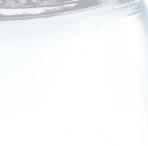



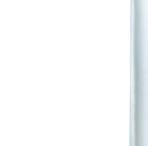






 Dr. Andreas Fellin, Owner of Plose Quelle AG
Dr. Andreas Fellin, Owner of Plose Quelle AG


























































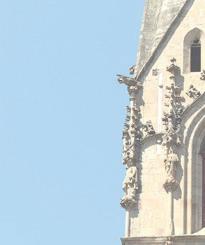
































Alchemilla • Apotheke Peer • Athesia Buch GmbH • Bar Stella • Blumen
Martina Fiori • Buchhandlung A. Weger • Charmant • Cinque •De Nardo • Euvita Reformhaus • Faro Shopping - Fawa
Federer • Galerie Kompatscher • Hummel KG uhren und schmuck
1912 Glasart • Kerer • Kindermode Pinocchio
Hutstübele • Janek
La casa del formaggio
• Max & Co • Maximilian
Mirage
Mode Erhard • MY STYLE SHOES • Natur-Backstube Profanter GmbH • Oberhuber • OEHLER Sophisticated Fashion Minds Accessories • OEHLER Sophisticated Fashion Minds Men
• OEHLER Sophisticated Fashion Minds Woman • Optik Brugger • Original Marines
Parfümerie Elite Lutteri
Pro Natura GmbH
• Seebacher Süßwaren
• Sport Heinz Kinigadner
Schatzer Schuhe
Shri Lakshmi
Sportler AG
Kg • Thomas Fink Metzgerei
Schuhhaus Dissinger
PennyBlack • Plunger Brigitte & CO. KG
Siebenförcher Feinkost GmbH
Stiletto • Susanne Mayrhofer
Tinkhauser • Trend sports voodoo store
• Trigon Art • Undercolors of Benetton
Upcycled Living
Weekend Max Mara • WiaNui
Cafè City - La Pizzetta des Angerer Martin • Domcafe
Dai Romani • Cafe Porticus
Restaurant Pizzeria Weisser Turm
Brixen Tourismus Genossenschaft / Bressanone Turismo Società Cooperativa
General management: Dr. Werner Zanotti
Project management: MA Astrid Früh
Artistic management: Benoît Quéro
Projekt management WoW – World of Water: Franck Marty
Technical management: Thomas Bourgueil
Concept Festivalbook:
Brixen Tourismus Gen. / Bressanone Turismo Soc. Coop.
Text: Doris Brunner - Textsalon, Vahrn
Translation: Gertraud Wisthaler
Grafic: Frei & Zeit, Brixen
Pictures: Spectaculaires, Brixen Tourismus Gen., Nafez Rerhuf, Helmut Moling, Philipp Santifaller, Rainer Held, Alex Filz, Marco Pietracupa, Airpicture, Brixmedia/Oskar Zingerle, Ludik Énergie, izOReL, Leonhard Angerer, Hartwig Thaler, Manfred Mureda, Johanna Meßner, Claudia Reh
Print: Druckerei Weger, Brixen
The Brixen Tourism Association thanks all the sponsors, partners and supporters and everyone who has believed in the project from the beginning.
ISBN: 978-88-6563-189-8
Price: 3,50 €